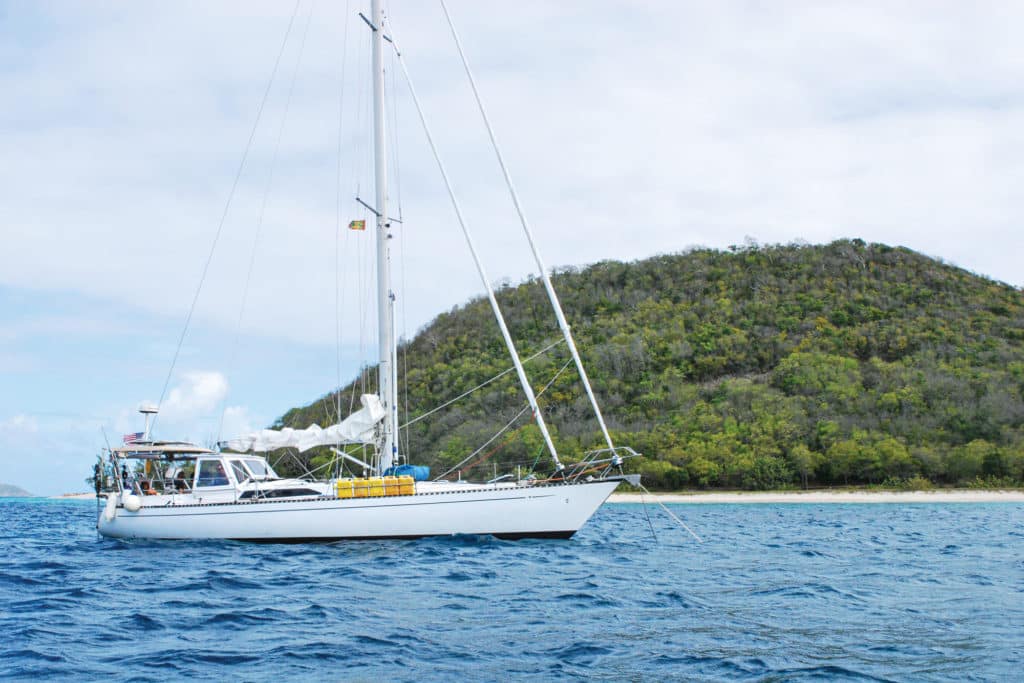
The defining moment of any passage for an offshore sailor is landfall: when the destination island or port finally looms upon the horizon. But when we set off from the Caribbean island of Petit St. Vincent into the teeth of the staunch easterly trade winds late last winter, we were instead aiming for a “sea fall”—an arbitrary set of coordinates somewhere in the Atlantic Ocean where we’d turn around and power-reach back to the Grenadines. We were on a voyage to nowhere.
My pal, sailing author and raconteur John Kretschmer, had conceived of the sea-fall concept during the pandemic. “Kretsch” makes his living conducting training trips for fledgling cruising sailors aboard his Kaufman 47, Quetzal. Those trips account for many of his 28 transatlantic voyages. When COVID-19 sidelined his usual itineraries, he pivoted into instructional journeys in the US Virgin Islands, which remained fairly accessible. He’d do three days out and three days back, with seamanship and navigation lessons sprinkled therein.
I’d hopped aboard for a condensed Grenadines version of the Quetzal experience that Kretsch had jokingly dubbed “the Polar Navigation Summit at 12 Degrees North.” He’s taking Quetzal above the Arctic Circle to the Norwegian archipelago of Spitsbergen this summer. In the Grenadines, we were joined by world-class climber and writer Mark Synnott, who’s taking his Stevens 47, Polar Sun, on a Northwest Passage attempt sponsored by National Geographic later this year. Me? I was the so-called “polar expert,” with a run through the Northwest Passage already under my belt.
The idea was to head offshore for 24 hours, stand watches, practice reefing, run through man-overboard drills and such, and, on each side of the actual sailing, to shoot the breeze about navigating through ice and related tactics. And, of course, to drink rum.
Making miles upwind from Petit St. Vincent, particularly at the outset, was not particularly pleasant. It had been a rough, windy night at our anchorage. As we set sail, it was still blowing the proverbial dogs off their chains, and, in the relatively shallow coastal shelf before getting into the deep Atlantic, the motion was nasty and violent.
Unfortunately, the trades were trending more easterly than northerly, which made our southeasterly heading closer to Trinidad and Venezuela—which was not where we wished to go. A few hours into it, Kretsch said: “Feel that temperature drop? Squall coming.” Fifteen minutes later, we were in it: the torrential rain flattening the seas from bouncy whitecaps to smooth, gray moguls through which Quetzal cleaved. Then things settled down. It was a great sail.
At midnight, after a fine meal, in clear weather under the thick stripe of the Milky Way, we spun around and tacked back toward Grenada, arriving in Prickly Bay just after dawn following one final squall. As we dropped Quetzal’s hook, the resulting rainbow was fairly spectacular.
We’d returned from nowhere, and, as it turned out, it was somewhere pretty cool.









